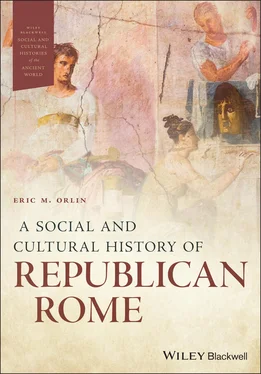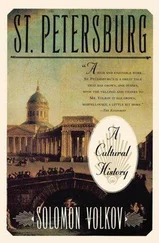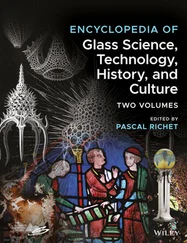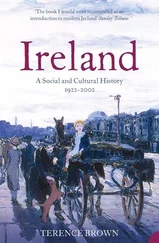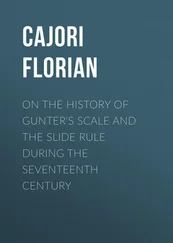153 137
154 138
155 139
156 140
157 141
158 142
159 143
160 144
161 145
162 146
163 147
164 148
165 149
166 150
167 151
168 152
169 153
170 154
171 155
172 156
173 157
174 158
175 159
176 160
177 161
178 162
179 163
180 164
181 165
182 166
183 167
184 168
185 169
186 170
187 171
188 172
189 173
190 174
191 175
192 176
193 177
194 178
195 179
196 180
197 181
198 182
199 183
200 184
201 185
202 186
203 187
204 188
205 189
206 190
207 191
208 192
209 193
210 194
211 195
212 196
213 197
214 198
215 199
216 200
217 201
218 202
219 203
220 204
221 205
222 206
223 207
224 208
225 209
226 210
227 211
228 212
229 213
230 214
231 215
232 216
233 217
234 218
235 219
236 220
237 221
238 222
239 223
240 224
241 225
242 226
243 227
244 228
245 229
246 230
247 231
248 232
249 233
250 234
251 235
252 236
253 237
254 238
255 239
256 240
257 241
258 242
259 243
260 244
261 245
262 246
263 247
264 248
265 249
266 250
267 251
268 252
269 253
270 254
271 255
272 256
273 257
274 258
275 259
276 260
277 261
278 262
279 263
280 264
281 265
282 266
283 267
284 268
285 269
286 270
287 271
288 272
289 273
290 274
291 275
292 276
293 277
294 278
295 279
296 280
297 281
The idea of writing a textbook on Roman history began on a long drive from Calgary, Alberta back to Berkeley, California, after attending the Annual Meeting of the Association of Ancient Historians. Fired up by presentations at the conference, two graduate school friends, Judy Gaughan and Beth Severy, and I brainstormed what we might do if we ever decided to write a textbook.
Thankfully this book is not the crazy text that three sleep-deprived students conjured out of the midnight air as we crisscrossed the Pacific Northwest. However, that night did plant the seed, of what parts of the story are often omitted or of how one might try to tell the story of the Roman Republic differently. As I taught courses over the past twenty years, I tried to include as many of those parts as I could, always looking for different ways to tell the story. My courses always involved a significant focus on religion, the family, social structure, arts and letters, and the economy, and I often found myself frustrated that even the new wave of excellent Roman history textbooks did not devote the space I wanted to these topics. When Wiley informed me that they were developing a series of textbooks for the ancient world focused on social and cultural history, I felt I had to say yes, even as I felt there had to be people more qualified than I to write it.
A book such as this does not stand on its own: it rests on the work of many scholars who have written in greater depth on various subjects covered in this book. Indeed, one of the great challenges of this book has been to take brilliant ideas of others expressed in a book of 80 000 words and try to shrink them down to 500 words. Most of these books can be found in the Further Readings section, but I want to acknowledge my debt also to those authors whom space prevented me from listing. I want to express particular appreciation to colleagues and friends who took the time to read chapters and try to save me from as many mistakes as possible: Bill Barry, Douglas Boin, Lee Brice, Judy Gaughan, Matthew Loar, Carolyn MacDonald, Carlos Noreña, Andrew Riggsby, Brett Rogers, Nate Rosenstein, Beth Severy-Hoven, and Jesse Weiner. Special thanks go to Nandini Pandey, who not only read chapters multiple times, but also offered encouragement at critical moments. The mistakes that remain, however egregious, are my own fault.
Words cannot begin to express my appreciation to my colleagues in the Department of Classics and Ancient Mediterranean Studies at the University of Puget Sound: Bill Barry, Aislinn Melchior, and Brett Rogers, as well as colleagues who have spent time with us including Megan Daniels, Matthew Gorey, Kyle Helms, and Megan O’Donald. They have all been excellent companions on my journey and have expanded my horizons as I worked through different elements of teaching the Roman Republic. The Provost at the University of Puget Sound, Kristine Bartanen, offered invaluable support in the form of both time and treasure. My wife and boys deserve special mention for putting up with my rants on topics from the Romans to racism and everything in between.
Appreciation is also due to many generations of students at the University of Puget Sound, who tolerated me as I led them through these topics year after year and who taught me more about the texts and teaching them. That is doubly true for the past two generations of students who allowed me to inflict early drafts of several chapters on them. I also wish to thank the students in HIST 491 at CSU Pueblo in the fall of 2020, who read the chapter on Law and allowed me to Zoom into their class for discussion and critique. Finally I want to thank my two partners on that long overnight drive many years ago, Judy Gaughan and Beth Severy-Hoven, who have continued to put up with me after all these years, to support and correct me even when I go wrong, and to open up new vistas of understanding for me. I have learned more in the process of writing this book than I ever would have imagined, and I am grateful to all those who taught me along the way.
Timeline of Roman History
Parentheses indicate an approximate date
| Period |
Date |
Military |
Political |
Social |
Cultural |
Religious |
| Monarchy |
753 BCE |
|
Traditional date for Foundation of City of Rome |
(Romulus creates patricians, plebeians, and patron–client relationships) |
|
(Cult of Hercules arrives in Rome) |
| Early Republic |
509 |
|
Traditional date for Foundation of Roman Republic |
|
Etruscan terracotta statues |
Temple of Jupiter Capitolinus |
|
494 |
Local skirmishes |
Traditional date for First Secession of Plebs |
Struggle of Orders (Traditional dates 494–287 BCE) |
|
Temple of Castor and Pollux |
|
451–50 |
|
|
|
Twelve Tables written |
|
|
431 |
|
|
|
|
Temple of Apollo |
|
396 |
Conquest of Veii |
|
|
|
Evocatio of Juno Regina |
|
390 |
Gallic Sack of Rome |
|
|
Destruction (?) of City |
|
|
367 |
|
Creation of praetor |
Plebeians eligible for consulship |
(Construction of “Servian” wall) |
|
|
341-338 |
War vs. Latin League |
Settlement of 338 |
|
(Manipular Organization of Army) |
|
|
326 |
|
|
Abolition of Nexum slavery |
|
|
|
312 |
|
|
|
Aqua Appia and Via Appia constructed |
|
|
304 |
|
|
|
Publication of legis actio |
|
|
290 |
Conquest of Samnium complete |
|
|
(Capitoline Brutus) |
Temple C of Largo Argentina |
| Middle Republic |
280–275 |
Wars vs. Pyrrhus in S. Italy |
|
|
(Introduction of Roman coinage) |
|
|
270 |
|
|
Death of Scipio Barbatus |
|
|
|
264–241 |
First Punic War |
|
|
(Livius Andronicus) |
|
|
218–202 |
Second Punic War |
|
|
|
|
|
218 |
Hannibal crosses Alps into Italy |
|
|
|
|
|
216 |
Hannibal destroys 100 000 Roman soldiers |
|
|
(Naevius) |
|
|
212 |
|
|
|
Marcellus brings Greek art from Sicily |
|
|
204 |
|
|
|
(Fabius Pictor) |
Magna Mater brought to Rome |
|
202 |
Scipio invades N. Africa; victory over Carthage |
|
|
(Plautus) |
|
|
200–146 |
Conquest of Greece and Asia Minor |
|
(Massive Influx of enslaved persons) |
(development of formulary procedure) |
|
|
195 |
|
|
Repeal of lex Oppia |
(Ennius) |
|
|
186 |
|
|
|
(Terence) |
Bacchanalia incident |
|
184 |
|
Censorship of Cato the Elder |
|
Basilica Porcia |
|
|
177 |
|
|
Italian recruitment difficulties |
|
|
|
171 |
|
|
Spurius Ligustinus |
|
|
|
169 |
|
|
lex Voconia |
|
|
|
167 |
Victory in Greece |
Triumph of Aemilius Paullus |
|
Polybius arrives in Rome |
|
|
161 |
|
|
lex Fannia sumptuary legislation |
|
|
|
160 |
|
|
(Cornelia raises the Gracchi brothers) |
(Cato’s On Agriculture) |
|
|
154 |
|
|
|
Stone theater in Rome destroyed |
|
|
149 |
|
|
|
Creation of first permanent court |
|
|
149–146 |
Third Punic War |
|
|
|
|
|
147 |
|
|
|
First marble temple in Rome |
|
|
146 |
Destruction of Carthage and Corinth |
|
|
|
|
|
139 |
|
Introduction of Secret Ballot |
|
(Lucilius) |
|
| Late Republic |
133 |
|
Tiberius Gracchus |
|
|
|
|
122 |
|
Gaius Gracchus |
(Tombstone of Claudia) |
|
|
|
107 |
(Army reforms) |
First consulship of Marius |
|
|
|
|
104 |
|
|
|
First election for Pontifex maximus |
|
|
91–89 |
Social War |
|
Italians gain full citizenship |
(Jurist Mucius Scaevola) |
|
|
88 |
War vs. Mithridates |
Sulla marches on Rome |
Massacre of Italians in Asia |
|
|
|
82–79 |
|
Sulla’s dictatorship |
Cicero and Terentia marry |
(Appearance of Dressel amphorae) |
|
|
80 |
|
|
|
First surviving amphitheater at Pompeii |
|
|
70 |
|
Cicero’s prosecution of Verres |
|
(Veristic portraits, e.g. statue of general from Tivoli) |
|
|
67–63 |
Pompey the Great conquers East |
|
|
|
|
|
60 |
|
“First Triumvirate” formed |
|
(Catullus) |
|
|
59 |
Caesar’s Campaigns in Gaul |
Consulship of Julius Caesar |
Pompey marries Julia |
|
|
|
55 |
|
|
|
Theater of Pompey built |
|
|
53 |
|
|
Tiro gains free status |
(Cicero) |
|
|
49 |
Civil War between Pompey and Caesar |
Caesar crosses Rubicon |
|
|
|
|
48–44 |
|
Dictatorship of Caesar |
|
|
|
|
46 |
|
|
Cicero and Terentia divorce |
Dedication of Forum of Caesar |
|
|
45 |
|
|
Death of Tullia |
|
|
|
44 |
|
Caesar assassinated |
|
|
Caesar deified after his death |
|
31 |
Battle of Actium |
|
|
|
|
|
27 |
|
Octavian becomes Augustus, first Roman Emperor |
|
|
|
|
25 |
|
|
|
Livy publishes first five books of history |
|
|
20 |
|
|
|
(Horace, Ovid, Sulpicia active) |
|
|
19 BCE |
|
|
|
Vergil dies; Aeneid published after death |
|
|
79 CE |
|
|
|
Eruption of Vesuvius buries Pompeii |
|
|
450 |
|
|
|
(Oldest surviving manuscript of Terence) |
|
|
529 |
|
|
|
Justinian’s Digest published |
|
|
1748 |
|
|
|
Rediscovery of Pompeii |
|
|
1764 |
|
|
|
Winckelmann argues that white statuary is ideal |
|
|
1789 |
|
Authors of Federalist Papers use Roman pseudonyms |
|
|
|
|
2020 |
|
|
|
White supremacists deploy SPQR as symbol |
|
Introduction: We Are All Historians
Читать дальше
